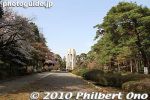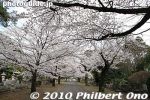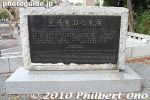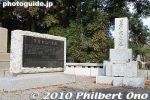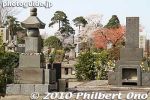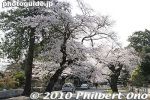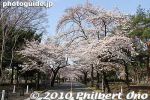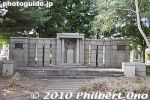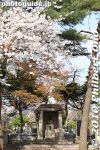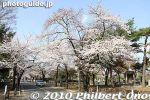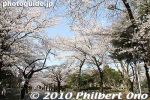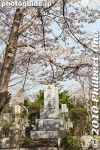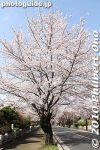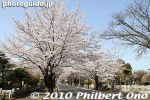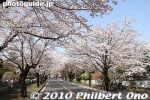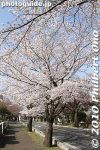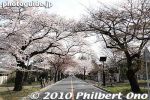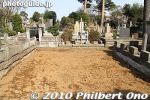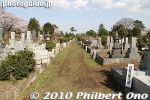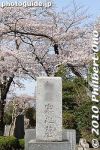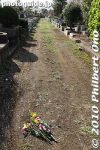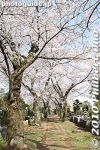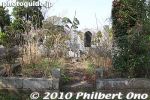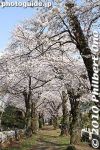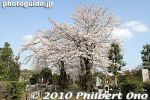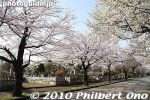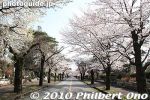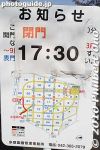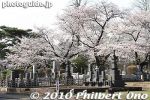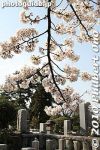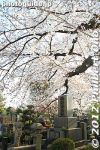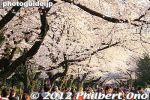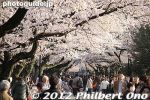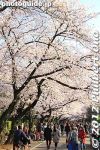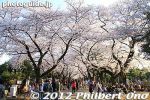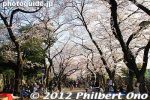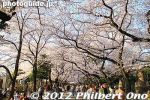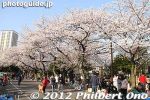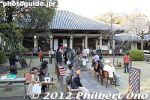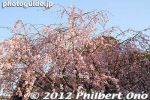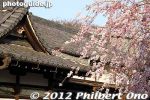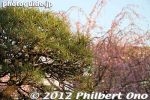 Image search results - "Cemetery" Image search results - "Cemetery" |

Main entrance to Aoyama Cemetery during cherry blossom season in early April. Gaienmae Station (Ginza/Hanzomon Line) and Nogizaka Station (Chiyoda Line) are the closest subway stations.
|
|

Aoyama Cemetery office near the main entrance where you can obtain a map of the cemetery and ask where particular people are buried. The maps they provide do not show where the most famous people are (such as prime ministers).
|
|

Main thoroughfare, lined with cherry trees, cuts through the middle of the cemetery where cars whiz by. Quite irritating.
|
|

Cherry blossom tunnel at Aoyama Cemetery.
|
|
|
|

Aoyama Cemetery is one of Tokyo's noted spots for cherry blossoms. However, having hanami picnics is not allowed.
|
|

Cherry blossoms are so fleeting. They last for only a short time, like life itself. And so cherry blossoms are often found at cemetaries in Japan.
|
|
|

These trees stood out.
|
|
|
|

Cherry blossoms and graves.
|
|

Aoyama Cemetery map. Quite complicated system to find grave plots.
|
|

Signs tell you where you are. Quite bewildering mapping system.
|
|

Aoyama Cemetery has over 123,000 graves occupying 125,000 square meters within the cemetery land area of 263,564 sq. meters.
|
|

This is the Foreigner's Cemetery where many foreigners who helped to modernize Japan are buried.
|
|

A monument erected in March 2007 by Tokyo Governor Ishihara Shintaro in appreciation of the foreigners who helped build Japan.
|
|

List of foreigners buried in this Foreigner's Cemetery. Note that there also other foreigners buried in other parts of Aoyama Cemetery.
|
|

Foreigner's Cemetery 外国人墓地
|
|

Foreigner's Cemetery 外国人墓地
|
|

Grave of Edoardo Chiossone (1833-1898), an Italian who introduced printing technology (for money and stamps) to Japan. He loved Japan and amassed a huge collection of Japanese art, especially woodblock prints. The collection is donated to a Genova museum.
|
|

Gravestone of Edoardo Chiossone
|
|

Grave of Joseph Heco who was born Japanese (as Hamada Hikozo) but naturalized as a US citizen.
|
|

Grave of Joseph Heco
|
|

Grave of the family of Robert Walker Irwin (1844-1925), Hawaiian Minister to Japan. (Iron gate has since been removed.)
|
|

Graves of the family of Robert Walker Irwin (1844-1925), Hawaiian Minister to Japan.
|
|

Grave of Robert Walker Irwin (1844-1925), Hawaiian Minister to Japan and his Japanese wife Iki. Eldest child Bella Irwin is also buried here.
|
|

Gravestone of Robert Walker Irwin (1844-1925), Hawaiian Minister to Japan and his Japanese wife Iki.
|
|

Grave of Robert Walker Irwin Jr. (Robert Walker Irwin's first son) and his first wife Fusako.
|
|

Grave of Richard Irwin (Robert Walker Irwin's second son) and his son Takeo and daughter Yukiko Irwin.
|
|

Grave of Mary Irwin (Robert Walker Irwin's second daughter).
|
|

Grave of Tsuneko Irwin second wife of Robert Walker Irwin Jr. and her son John.
|
|

Grave of Tsuneko Irwin second wife of Robert Walker Irwin Jr. and her son John.
|
|

This stone monument gives the biography of Robert Walker. His birthdate, descendant of Benjamin Franklin, his move to Japan, companies he worked for in Japan including Mitsui Bussan, supervision of the immigration to Hawaii,founding of the Taiwan Sugar Co., and the decorations he received from the Japanese government. Died in 1925 at age 81.
ロベルト・ウォルカー・アルウインは米国費府
の住民にして西暦千八百四十四年一月七日
に生まれベンジャミン・フランクリンの後裔也
慶應二年十一月来朝し海外貿易又は日本海
運の開発誘導に貢献するところ頗る多く三
井物産会社其他に勤務し後ち日本駐劄布哇
国公使に就任して日本移民の布哇渡航を企
画成功す蓋し之れ日本移民海外発展の基と
なれるものにして実に日本移民事業の開祖
たり明治三十三年台湾製糖株式会社の創立
発起人となり日本糖業の為めに尽くすとこ
ろ又尠なからす勲一等に叙せられ瑞鳳章を
賜ひ後ち又旭日大綬章を賜ふ大正十四年一
月五日永眠す行年八十一才也
|
|

Monument dedicated to Bella, built by the Irwin Gakuen (formerly Gyokusei Gakuen) alumni association (Gyokusei-kai) for the school's 70th anniversary in Nov. 1985.The bottom has a bio of Bella.
|
|

This originally was for grave visitors to leave their business cards, but it does not work. (As of this writing, there is no receptacle to collect the cards.)
|
|

Graves of Robert Walker Irwin (rear, on the right) and his family. (Old photos of the graves.)
|
|

Grave of loyal dog Hachiko and his master, Professor Ueno.
|
|

Grave of Yoshida Shigeru, Japan's first postwar prime minister.
|
|

Grave of Yoshida Shigeru 吉田茂の墓
|
|

An unkept grave.
|
|
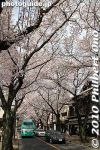
Way to Tama Cemetery. One of Tokyo's major cemeteries with the graves of celebrated figures including politicians, scholars, and novelists. Also a noted cherry blossom spot in spring.
|
|
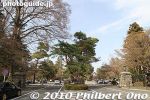
Front entrance to Tama Cemetery.
|
|
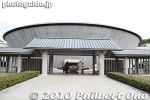
Mitama-do Hall
|
|
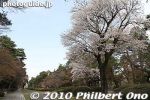
The cemetery is basically in a grid pattern.
|
|
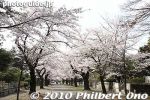
The main roads have cherry trees.
|
|
|
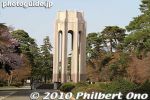
Tama Cemetery Fountain tower.
|
|
|
|
|

Memorial plaque in Japanese and English.
|
|
|
|
|
|
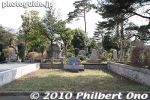
Empty grave plot.
|
|
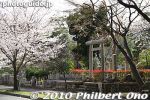
Torii gate at this gravesite.
|
|
|
|
|
|
|
|
|
|
|
|
|
|
|
|
|
|
|
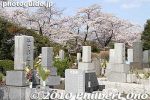
Cherry blossoms and graves at Tama Cemetery.
|
|
|
|
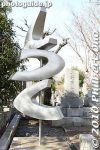
Elaborate grave sculpture.
|
|
|
|
|
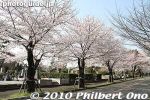
Some of the best sakura trees are on this main road.
|
|
|
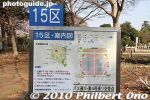
Cemetery map and sign.
|
|
|
|
|
|
|
|
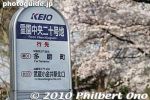
Bus stop for JR Musashi-Koganei Station.
|
|

Way to cemetery. Six Hikone Castle lords, including Ii Naosuke, have graves here. Setagaya was the domain of the Ii clan who often worked in the Tokugawa government.
|
|

Straight ahead is the grave of Lord Ii Naotaka, the 2nd lord of Hikone Castle in Shiga Prefecture.
|
|

Turn left and you see this. Ii clan graves on both sides. Lord Ii Naosuke's grave is at the very end on the left.
|
|

Lord Ii Naosuke's grave is at the very end on the left.
|
|

Grave of Lord Ii Naosuke (1815-1860), the lord of Hikone Castle in Shiga Prefecture and Chief Minister of the Tokugawa Shogun's government. Gotokuji temple, Setagaya-ku, Tokyo. 井伊直弼の墓 豪徳寺
|
|

Only Ii Naosuke's grave has a sign explaining about him.
|
|

Grave of Lord Ii Naosuke (1815-1860), the lord of Hikone Castle in Shiga Prefecture and Chief Minister of the Tokugawa Shogun's government. Gotokuji temple, Setagaya-ku, Tokyo. 井伊直弼の墓 豪徳寺
|
|

Gravestone of Ii Naosuke.
|
|

Right side of Lord Ii Naosuke's grave.
|
|

Tree of white camellias grow about Lord Ii Naosuke's grave.
|
|

Grave of Lord Ii Naosuke's wife.
|
|
|
|

Grave of Lord Ii Naohide (1755-1789). He served as Tairo Chief Minister in the Tokugawa government. Gotokuji temple, Setagaya, Tokyo 井伊直幸
|
|

Grave of Lord Ii Naotaka's eldest daughter who donated a lot to the temple. 井伊直孝長女
|
|
|

Grave of Lord Ii Naotaka (1590-1659), 2nd lord of Hikone, Shiga. Gotokuji temple, Setagaya, Tokyo 井伊直孝
|
|

Grave of Lord Ii Naoyoshi (1727-1754), Gotokuji temple, Setagaya, Tokyo 井伊直禔
|
|

Grave of Lord Ii Naotsune (1693-1710), Gotokuji temple, Setagaya, Tokyo 井伊直恒
|
|

Grave of Lord Ii Naonori on right.
|
|

Grave of Lord Ii Naonori (1848-1904), Gotokuji temple, Setagaya, Tokyo 井伊直憲の墓
|
|

Six Jizo
|
|

About the Kyogoku Clan graves at Tokugen-in temple. It was Kyogoku Takatoyo, lord of Marugame in Shikoku, who in 1672 acquired the temple land and gathered all the Kyogoku graves scattered in the area to Tokugen-in.
|
|

Kyogoku Clan graves at Tokugen-in temple. Kyogoku Takatoyo, the 22nd Kyogoku Clan leader, renamed the temple Tokugen-in after the posthumous Buddhist name of his father Takakazu.
|
|

Layout of Kyogoku Clan graves at Tokugen-in temple. There is a lower level and an upper level of graves on a slope accessible by stairs. Although Ujinobu was the first to make it the clan's family temple, it was quite dilapidated by Takatoyo's t
|
|
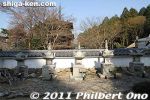
Graves of the Tadotsu Clan (多度津藩), a branch of the Kyogoku who ruled in Marugame. From left to right, Kyogoku Takateru (高琢), Takakata (高賢), Takabumi (高文), Takayoshi (高慶), and Takamichi (高通). National Historic Site
|
|
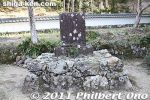
Epitaph 碑文
|
|
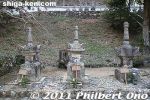
Graves of Kyogoku Takayoshi (京極 高美), Takatoo (京極 高迢), and Takamasa (京極高政). They were much less prominent.
|
|
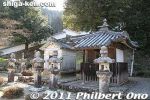
Kyogoku Takatsugi and Kyogoku Takanori's (1718-1763) grave
|
|
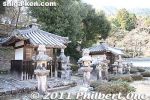
Kyogoku Takanori (1718-1763) and Kyogoku Takanaka's (1754-1811) graves.
|
|
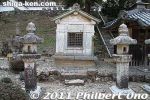
Kyogoku Takatsugu's grave.
|
|
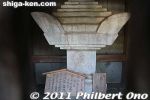
Inside Kyogoku Takatsugu's grave.
|
|
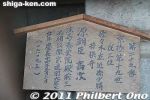
Kyogoku Takatsugu's grave.
|
|
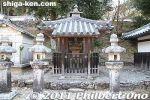
Kyogoku Takanori's (1718-1763) grave. He was the fourth lord of Marugame in Shikoku. 京極高矩
|
|
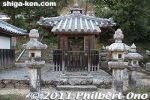
Kyogoku Takanaka's (1754-1811) grave. He was the fifth lord of Marugame in Shikoku. 京極高中
|
|
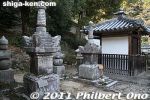
Two lesser graves for Kyogoku Tadataka (京極忠高) and Takakazu (京極高和), the eldest son of Takatsugu.
|
|
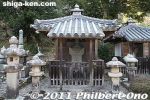
Grave of Kyogoku Takatoyo, second lord of Marugame in Shikoku. 京極高豊
|
|
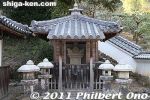
Grave of Kyogoku Takamochi, third lord of Marugame in Shikoku. 京極高或
|
|
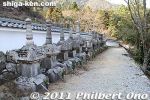
There are steps to go up the hill where there are more Kyogoku graves. These are for the older Kyogoku members, starting with the founder of the Kyogoku Clan.
|
|
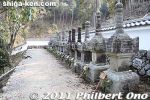
The narrow upper level has 18 gravestones, starting with the first Kyogoku Clan leader Ujinobu on the right.
|
|
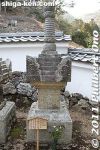
The first Kyogoku grave, that of Ujinobu, the founder of the Kyogoku Clan. 氏信
|
|

View from the hill.
|
|
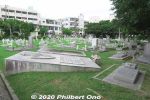
Near Tomari Port is the Tomari International Cemetery (泊外人墓地). First built in the early 19th century. Destroyed during WWII and restored in 1955. Numerous foreigners are buried here. 外国人墓地
|
|
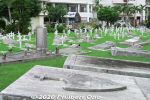
The Commodore Perry Landing Monument is also in the Tomari International Cemetery, seen here toward the left.
|
|
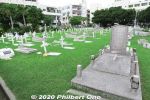
William Board, a sailor from Commodore Perry's crew, is also buried here after he was caught assaulting a local female and was stoned by villagers in 1854. He was drunk and fell into the water and drowned.This occurred while Perry went to Uraga. He had left a few crew in Naha, to be picked up on his return trip. A trial was held for the men who stoned Board. They were punished by being exiled to remote islands including Yaeyama. There's a small gravestone for Board in the cemetery.
|
|
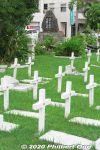
Commodore Perry Landing Monument is in the distance. The cemetery has locked gates so we can't enter it. Not really a tourist attraction, but it can be clearly viewed from outside the low fence.
|
|

Perry Monument marking the place where he landed on June 6, 1853. The monument is within the Foreigners' Cemetery in Naha, Okinawa.
|
|
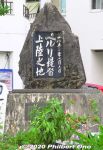
On Naha's waterfront, Commodore Perry Landing Monument. Perry first landed in Naha in May 1853 and was finally able to visit Shuri Castle on June 6, 1853 after insisting on it. Meanwhile, his crew explored the island and saw interesting things.
|
|
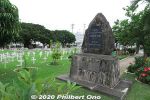
About a month later, he and his Black Ships shocked mainland Japan off Uraga in Kanagawa Prefecture. In the following year, after the U.S.-Japan Treaty of Peace and Amity was signed in Yokohama, Perry visited Naha again and signed the Ryukyu-U.S. Treaty of Amity on July 11, 1854. ペリー提督上陸記念碑
|
|
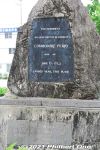
Back of Perry Monument: This monument has been erected in honor of COMMODORE PERRY who on June 6, 1853 landed near this place.The lower plaque is inscribed with Perry's quote when he visited Shuri Castle:
PROSPERITY TO THE LEW CHEWANS, AND
MAY THEY AND THE AMERICANS ALWAYS BE
FRIENDS.
COMMODORE PERRY AT A RECEPTION IN
HIS HONOR (THE ROYAL GUEST
HOUSE) SHURI, OKINAWA, JUNE 6, 1853
|
|

Older photo of the monument when it looked more new. The lower plaque wasn't faded yet."Lew Chew" (Ru-chu ルーチュー), as spelled by Perry, is what the Ryukyu Kingdom called itself. There's also "Uchina" (ウチナー) which referred to the main island, but today, "uchina" usually refers to the entire prefecture of Okinawa.
|
|

Older photo of the monument when it looked more new.
|
|
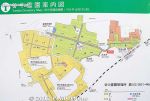
Map of Yanaka Cemetery. The graves of the Tokugawa shoguns are walled off and off limits to the public. The main drag cuts through the green section on this map.
|
|
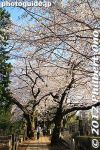
Yanaka Cemetery (Yanaka Reien in Japanese) is one of Tokyo's major cemeteries where fifteen Tokugawa shoguns (including Yoshinobu, the last shogun), some daimyos, and famous people are buried.
|
|
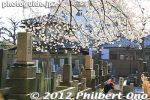
It is also famous for cherry blossoms along the main drag in the middle of the cemetery. Near JR Nippori Station.
|
|
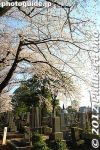
Other famous people buried at Yanaka Cemetery include Hisaya Morishige, Eiichi Shibusawa, Yokozuna Dewanoumi, and Taikan Yokoyama.
|
|
|
|
|
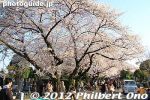
This is the main drag.
|
|
|
|
|
|
|
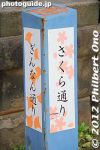
The main drag is nicknamed "Sakura-dori" meaning Cherry Blossom Road.
|
|
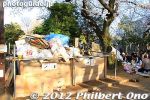
Trash piles up during cherry blossom season when many people have flower-viewing (hanami) picnics.
|
|
|

Rules for flower viewers. No fires and take home your trash.
|
|
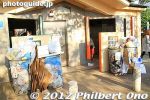
Public toilets and trash.
|
|
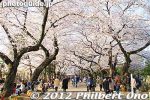
Yanaka Cemetery cherry blossoms, Tokyo.
|
|
|
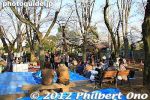
Around halfway down the main drag is this small clearing. This was where a five-story pagoda was. It was destroyed by fire in 1957 by arsonists.
|
|
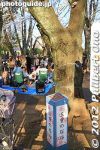
Marker showing the location of the pagoda.
|
|
|
|
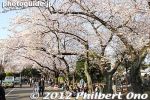
The main drag was the sando path to Tennoji temple.
|
|
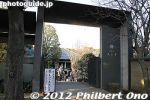
Gate to Tennoji temple, the original owner of Yanaka Cemetery. 天王寺
|
|

About Tennoji temple.
|
|
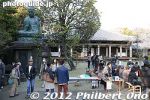
Tennoji temple
|
|
|
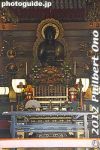
Tennoji temple's Buddha.
|
|
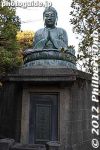
Tennoji temple also had an outdoor statue of the Buddha.
|
|
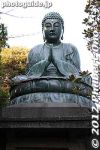
Seated Buddha statue at Tennoji temple in Yanaka Cemetery, Tokyo.
|
|

About the seated Buddha statue.
|
|
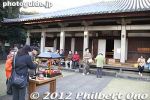
I visited on April 8, 2012. April 8 is Hana-matsuri or Buddha's birthday at Tennoji temple in Yanaka Cemetery, Tokyo.
|
|
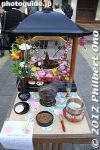
Altar for Hana-matsuri or Buddha's birthday at Tennoji temple in Yanaka Cemetery, Tokyo.
|
|
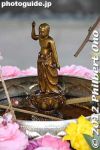
Pour sweet tea over the statue of a baby Buddha at Tennoji temple in Yanaka Cemetery, Tokyo.
|
|
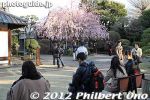
Tennoji temple.
|
|
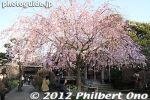
Tennoji temple also has this crowd-pleasing weeping cherry tree.
|
|
|
|
|
|
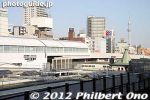
Yanaka Cemetery is a short walk from JR Nippori Station.
|
|
|
|
|














































